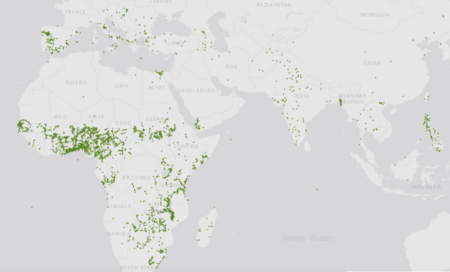- Australian politicians promise genebank. World holds its breath.
- Meanwhile, in Turkey…
- … and India…
- …and Peru…
- …and China.
- Another way of getting seeds to farmers.
- What, even irradiated ones?
- But don’t forget the bees.
- Hopefully DIS won’t scupper all this sharing.
- Because although our foods are not set in stone…
- …we’ll need more than changes in habits to adapt agriculture to climate change.
All maize, all the time
Thanks to Jay Bost for alerting us to a whole bunch of forthcoming maize talks. The first is by Dr Helen Anne Curry today, who will use her book…
…Endangered Maize, to discuss the history of efforts to conserve crop diversity from the turn of the twentieth century until today. Focusing especially on the case of maize, she will highlight the stories about agricultural change that have motivated scientists and states to save threatened varieties—and raise questions about the agendas ultimately served by these stories.
The others start next month:
The National Agricultural Library is hosting a three-part webinar series that will highlight global food staples and the intersections of global cuisines with USDA research, social sciences, and history. The series will focus on maize and corn and its past, present, and future role in food, culture, and society. Key areas of focus for the series will be sustainability, environmental justice, social justice, and nutrition security.
Cowpea makes the world go round
Thanks to Kai Sonder for this beautiful video of cowpea cultivation around the world.
Here’s genebank accessions in Genesys for comparison.
Nibbles: Eat this tomato, Access to Seeds Index, Tongan coconuts, Grounding the groundnut, Traditional Spain, Genebanks in China and Nigeria, Tree conservation, Sorghum & millet breeding, Iraqi ag, Genebank presentations
- Jeremy gets into tomato domestication and diversity on his podcast.
- The 2021 Access to Seeds Index Insights Report is out, and includes tomatoes.
- What is the most famous place for coconut varieties?
- A new book attempts to decolonize the peanut.
- Blood and water in Spain.
- A tale of two genebanks: China and Nigeria. Maybe the African Union can help? If not, maybe China might.
- Africa needs help with tree planting too. Maybe follow Italy’s example?
- Though maybe sorghum and millet will be ok.
- Send them to Iraqi farmers?
- Presentations on seed conservation and use in genebanks.
Brainfood: Digitizing collections, Bean core, Livestock diversity, Maya & maize, Fish stocks & CC, Save the weed, Flax CWR, Italian agrobiodiversity
- Cross-validation of a semantic segmentation network for natural history collection specimens. Computers can distinguish the herbarium label from the actual specimen and other stuff on the sheet, helping with the whole automatic digitization thing, but it takes some really fancy math.
- The landscapes of livestock diversity: grazing local breeds as a proxy for domesticated species adaptation to the environment. Medium fancy math used to map breed diversity in the Iberian Peninsula for different livestock species and relate it to environmental factors.
- South-to-north migration preceded the advent of intensive farming in the Maya region. Sort of like tomato, but in the other direction. Plenty of math involved, but behind the scenes, thankfully.
- Timing and magnitude of climate-driven range shifts in transboundary fish stocks challenge their management. Huge amount of data and very fancy math shows fish are in trouble.
- A Core Set of Snap Bean Genotypes Established by Phenotyping a Large Panel Collected in Europe. Ok, even I can follow the math on this one.
- Assessment of biogeographic variation in traits of Lewis flax (Linum lewisii) for use in restoration and agriculture. Very approachable math shows which populations of a CWR can best be used for restoration, and where; and also for domestication and breeding.
- An updated checklist of plant agrobiodiversity of northern Italy. Very useful use of very basic maths. Key number: only 43% of the PGR on the list are conserved ex situ.
- Cannabis, the multibillion dollar plant that no genebank wanted. No math needed to figure out weed needs a genebank.
